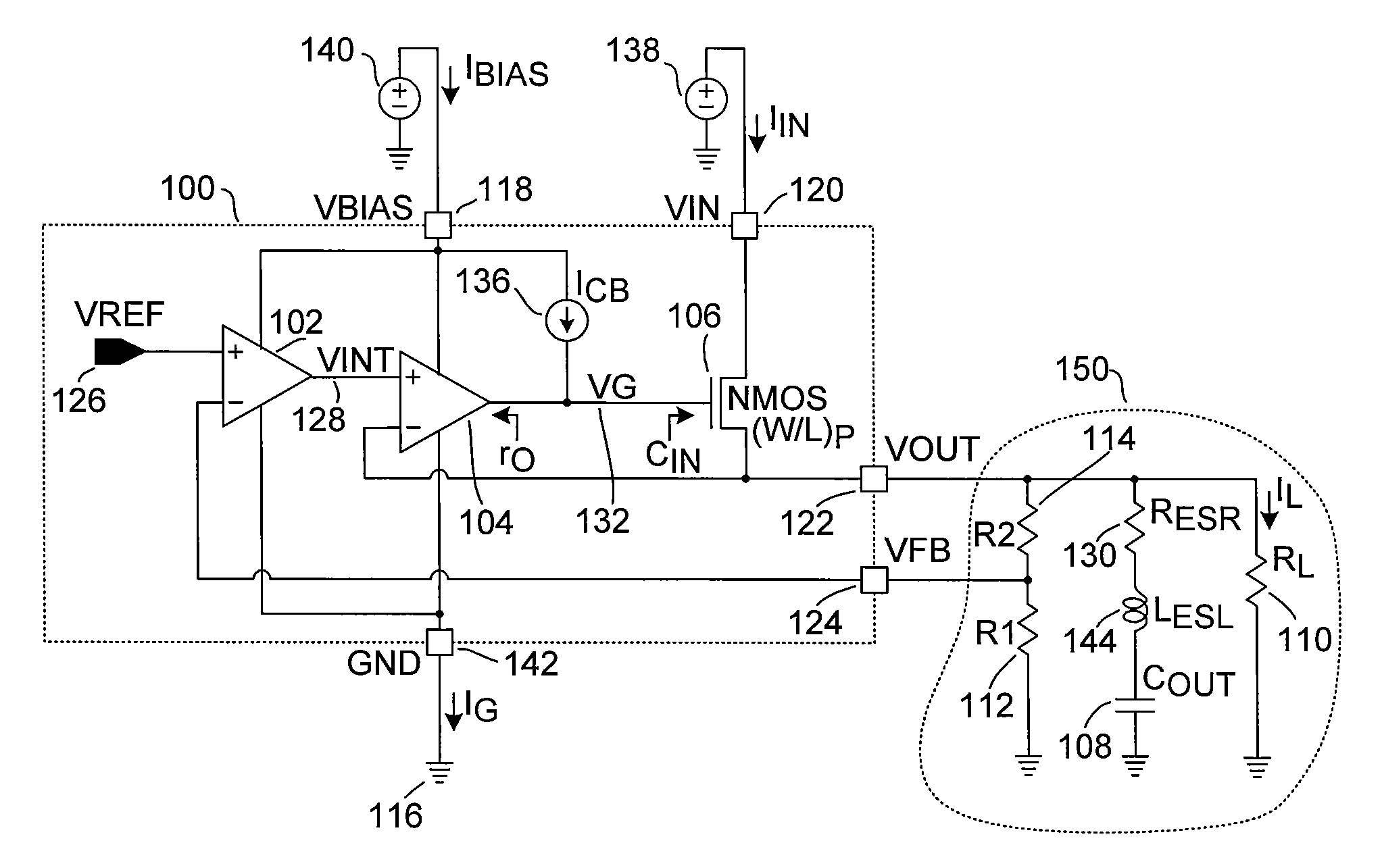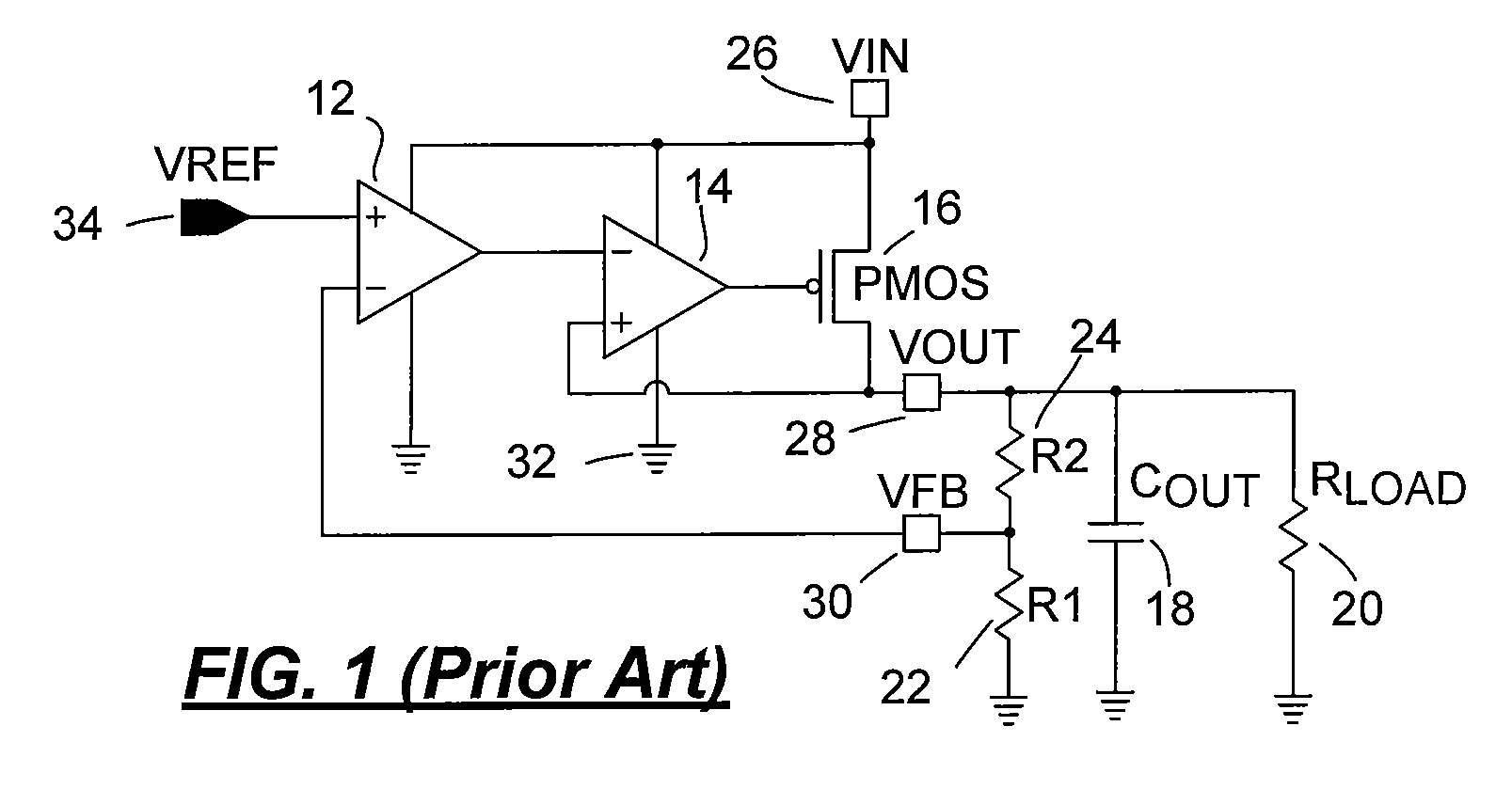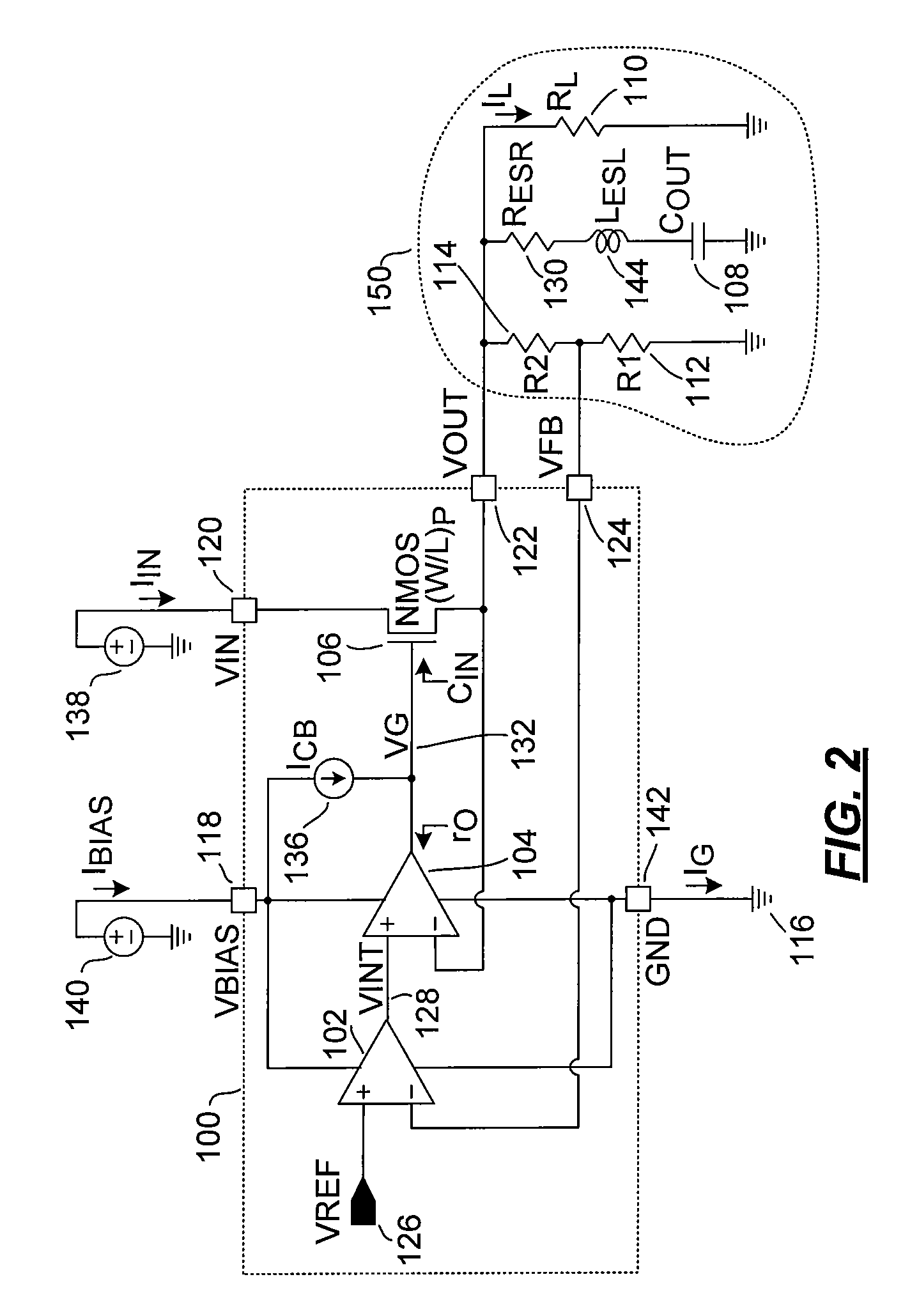Fast low dropout voltage regulator circuit
a voltage regulator and low dropout technology, applied in the direction of electric variable regulation, process and machine control, instruments, etc., can solve the problems of deteriorating the transient response of the ldo regulator, wasting valuable current, and affecting the efficiency of light load
- Summary
- Abstract
- Description
- Claims
- Application Information
AI Technical Summary
Benefits of technology
Problems solved by technology
Method used
Image
Examples
Embodiment Construction
[0024]FIG. 2 is a block diagram of a low drop-out (LDO) linear integrated circuit 100, in accordance with one embodiment of the present invention. LDO 100 is shown as including amplifiers 102, 104, N-type pass element 106, and current source 136. Amplifiers 102 and 104 form a dual-feedback loop control circuit adapted to regulate output voltage VOUT delivered to output node 122. The following description is provided with reference to an NMOS transistor 106. It is understood that any N-type transistor, such as a bipolar NPN transistor, may also be used.
[0025]Amplifier 102 is a high-gain low-bandwidth amplifier (HGLBA) forming a relatively slower feedback loop (SFL) adapted to control the DC accuracy of regulator 100. Amplifier 104 is a low-gain, high-bandwidth amplifier (LGHBA) that together with NMOS transistor 106 form a fast and high current unity gain voltage follower. Amplifier 104 forms a fast feedback loop (FFL) adapted to maintain output voltage VOUT within a predefined range...
PUM
 Login to View More
Login to View More Abstract
Description
Claims
Application Information
 Login to View More
Login to View More - R&D
- Intellectual Property
- Life Sciences
- Materials
- Tech Scout
- Unparalleled Data Quality
- Higher Quality Content
- 60% Fewer Hallucinations
Browse by: Latest US Patents, China's latest patents, Technical Efficacy Thesaurus, Application Domain, Technology Topic, Popular Technical Reports.
© 2025 PatSnap. All rights reserved.Legal|Privacy policy|Modern Slavery Act Transparency Statement|Sitemap|About US| Contact US: help@patsnap.com



